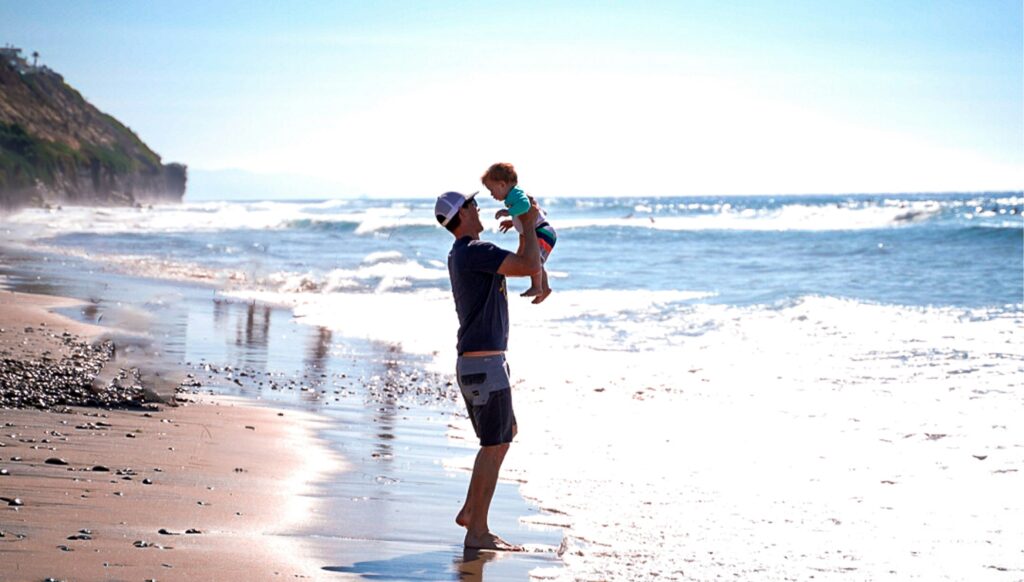Welcome, visionary leaders, to a transformative journey towards mindful business leadership. In the dynamic landscape of modern business, where complexity and uncertainty abound, there emerges a call for a new paradigm of leadership—one rooted in mindfulness, compassion, and authentic presence. It is within this call that we find the invitation to embark on a journey of profound self-discovery and growth—a journey that will challenge and inspire you to rise to new heights of leadership excellence.
As top producing service providers, business leaders, and executives, you are no strangers to success. Your dedication, determination, and drive have propelled you to remarkable achievements in your respective fields. Yet, amidst the hustle and bustle of the business world, have you ever paused to consider the deeper dimensions of leadership—the subtle nuances that lie beneath the surface of strategic planning and bottom-line results?
The Levels of Attainment: Moving Towards Mindful Business Leadership offers a unique framework for navigating this terrain of inner exploration and transformation. It invites you to journey through ten series of levels, each representing a spectrum of consciousness—from unconscious incompetence to transcendent mastery. Along this journey, you will encounter challenges, insights, and opportunities for growth that will fundamentally shift your perspective on what it means to lead with mindfulness and purpose.
But make no mistake—this is not merely a theoretical exercise or a passive reflection on leadership principles. It is a call to action—a call to step boldly into the arena of self-discovery and personal evolution. It is a challenge to confront your fears, embrace your vulnerabilities, and tap into the reservoir of wisdom and compassion that resides within you.
Are you ready to rise to this challenge? Are you ready to embark on a journey of profound self-transformation that will not only elevate your leadership prowess but also enrich your life and the lives of those around you? The path ahead may be daunting, but it is also exhilarating—a journey of discovery, growth, and limitless possibilities.
So, let us set forth together, fellow leaders, with courage in our hearts and mindfulness as our guide. Let us dare to explore the depths of our being, unlock the full potential of our leadership, and create a world where mindful business leadership is not just a goal but a reality—a reality that begins with each and every one of us.
The journey awaits. Will you answer the call?
Levels of Attainment: Moving Towards Mindful Business Leadership
As you embark on the journey through “Levels of Attainment: Moving Towards Mindful Business Leadership,” I encourage you to approach it with an open mind and a willingness to engage deeply with the content. Here are some instructions to help you get the most out of reading through it:
1. Set an Intention: Before diving into the content, take a moment to set an intention for your reading experience. What do you hope to gain from exploring the levels of attainment? How do you envision applying the insights gained to your personal and professional life?
2. Reflective Reading: As you progress through each series of levels, take breaks to reflect on your own experiences and insights. Consider how each level resonates with your current mindset and behaviors in business leadership.
3. Journaling: Keep a journal handy as you read through each level. Take notes on key insights, moments of inspiration, and areas where you feel called to deepen your understanding or make changes in your leadership approach.
4. Self-Assessment: Periodically pause to assess your progress and growth along the journey. Where do you currently stand in terms of mindfulness in business leadership? What areas do you excel in, and where do you see opportunities for improvement?
5. Action Steps: As you encounter each level, consider actionable steps you can take to integrate the insights into your daily life and leadership practices. What specific actions can you commit to in order to embody the principles of mindful business leadership?
By approaching “Levels of Attainment” with intention, reflection, and action, you can unlock profound insights and catalyze meaningful transformation in your journey towards mindful business leadership.
Let’s begin reading!
Series 1: Awareness and Recognition
Level 1: Unconscious Incompetence
– Lack of awareness regarding the importance of mindfulness in business.
– No recognition of the impact of one’s mindset and actions on organizational outcomes.
– Operating on autopilot without considering the deeper implications of decisions.
Level 2: Conscious Incompetence
– Recognizing the gap in mindfulness and its relevance to business success.
– Acknowledging the need for greater self-awareness and mindfulness practices.
– Beginning to question habitual patterns and exploring avenues for personal growth.
Level 3: Conscious Competence
– Actively engaging in mindfulness practices and self-reflection.
– Cultivating awareness of thoughts, emotions, and behaviors in business contexts.
– Making intentional choices and applying mindfulness techniques to enhance leadership effectiveness.
Level 4: Unconscious Competence
– Internalizing mindfulness as a natural part of one’s leadership approach.
– Operating from a place of intuitive wisdom and presence in business interactions.
– Demonstrating consistent mindfulness without conscious effort, leading to enhanced decision-making and relationships.
Level 5: Mastery and Integration
– Fully embodying mindful leadership principles in all aspects of business and life.
– Inspiring others through authentic leadership and compassionate communication.
– Serving as a role model for mindfulness in the organization and beyond, catalyzing positive change and transformation.
Series 2: Emotional Intelligence and Connection
Level 1: Emotional Reactivity
– Reacting impulsively to emotions without awareness or regulation.
– Allowing emotions to dictate decision-making and interpersonal interactions.
– Creating tension and conflict in business relationships due to emotional volatility.
Level 2: Emotional Awareness
– Developing awareness of one’s own emotions and their impact on others.
– Recognizing triggers and patterns in emotional reactions.
– Beginning to regulate emotions and respond more intentionally in business situations.
Level 3: Empathetic Connection
– Cultivating empathy and understanding towards oneself and others.
– Listening actively and empathetically in business interactions.
– Building trust and rapport through genuine connection and compassion.
Level 4: Emotional Resilience
– Developing resilience in the face of challenging emotions and situations.
– Bouncing back from setbacks with grace and composure.
– Using mindfulness practices to manage stress and maintain emotional equilibrium.
Level 5: Emotional Mastery
– Mastering emotional intelligence and regulation in all business contexts.
– Creating a supportive and empathetic work culture that fosters collaboration and innovation.
– Inspiring others to develop their emotional intelligence and cultivate meaningful connections in the workplace.
Series 3: Purpose and Alignment
Level 1: Lack of Clarity
– Feeling disconnected from one’s purpose and values in business.
– Engaging in work solely for external rewards or societal expectations.
– Experiencing a sense of emptiness or disillusionment despite outward success.
Level 2: Seeking Clarity
– Questioning the deeper meaning and purpose behind business endeavors.
– Exploring personal values and aspirations in relation to professional goals.
– Seeking alignment between personal values and organizational mission.
Level 3: Purposeful Action
– Aligning business decisions and actions with a clear sense of purpose.
– Making choices that reflect personal values and contribute to meaningful impact.
– Finding fulfillment and satisfaction in work that aligns with one’s purpose.
Level 4: Inspired Leadership
– Inspiring others through authentic leadership rooted in purpose and vision.
– Communicating a compelling purpose that motivates and engages team members.
– Cultivating a culture of purpose-driven innovation and collaboration.
Level 5: Legacy and Impact
– Leaving a lasting legacy through purposeful leadership and meaningful contributions.
– Creating positive change within the organization and the broader community.
– Empowering others to discover and pursue their own purpose, thereby perpetuating a cycle of purpose-driven leadership.
Series 4: Presence and Engagement
Level 1: Disconnection
– Operating on autopilot, going through the motions without presence or engagement.
– Allowing distractions to dominate attention and focus during business activities.
– Feeling disconnected from oneself, others, and the present moment.
Level 2: Awareness of Disconnection
– Recognizing the tendency to disconnect and drift away from the present moment.
– Noticing the impact of distraction on productivity and well-being.
– Seeking opportunities to cultivate presence and re-engage with the here and now.
Level 3: Cultivating Presence
– Intentionally practicing presence and mindfulness in business activities.
– Developing the ability to focus attention and maintain awareness in the midst of distractions.
– Harnessing the power of presence to enhance productivity, creativity, and effectiveness.
Level 4: Embodied Presence
– Fully embodying presence in all aspects of business and leadership.
– Being fully present and engaged in meetings, negotiations, and interactions.
– Radiating a sense of calm and confidence that inspires trust and respect in others.
Level 5: Transcendent Presence
– Transcending individual identity and merging with the collective consciousness.
– Experiencing a deep sense of connection and unity with all beings.
– Leading from a place of profound presence and wisdom, catalyzing transformation and awakening in others.
Series 5: Resilience and Adaptability
Level 1: Resistance to Change
– Resisting change and clinging to familiar routines and ways of thinking.
– Feeling overwhelmed or threatened by uncertainty and unpredictability.
– Reacting defensively or with rigidity in the face of challenges or setbacks.
Level 2: Acceptance of Change
– Accepting change as an inevitable part of business and life.
– Recognizing the opportunities for growth and learning that come with change.
– Cultivating openness and flexibility in adapting to new circumstances and challenges.
Level 3: Resilience in Adversity
– Developing resilience to navigate setbacks and challenges with grace and perseverance.
– Embracing failure as a stepping stone to success and learning.
– Using mindfulness practices to stay grounded and centered during turbulent times.
Level 4: Adaptive Leadership
– Demonstrating adaptability and agility in leading through change and uncertainty.
– Anticipating and proactively responding to emerging trends and challenges.
– Inspiring confidence and trust in others through calm and decisive leadership.
Level 5: Evolution and Innovation
– Embracing change as a catalyst for evolution and innovation in business.
– Leading transformative change initiatives that drive growth and sustainability.
– Fostering a culture of continuous learning and adaptation that positions the organization for long-term success.
Series 6: Authenticity and Integrity
Level 1: External Validation
– Seeking validation and approval from external sources such as peers, superiors, or societal norms.
– Prioritizing image and status over authenticity and integrity in business interactions.
– Feeling disconnected from one’s true self and values in pursuit of external validation.
Level 2: Self-Exploration
– Embarking on a journey of self-discovery and introspection to uncover one’s authentic self.
– Questioning societal expectations and norms to align with personal values and beliefs.
– Recognizing the importance of authenticity and integrity in building trust and credibility.
Level 3: Authentic Expression
– Expressing oneself authentically in business interactions and relationships.
– Speaking and acting in alignment with one’s values and beliefs, even in challenging situations.
– Building genuine connections based on trust, transparency, and mutual respect.
Level 4: Integrity in Action
– Demonstrating integrity and ethical leadership in all business dealings.
– Upholding moral principles and values, even in the face of pressure or temptation.
– Inspiring trust and loyalty among stakeholders through consistent ethical conduct.
Level 5: Legacy of Authenticity
– Leaving a legacy of authenticity and integrity that transcends individual achievements.
– Serving as a role model for ethical leadership and values-driven business practices.
– Inspiring future generations of leaders to lead with authenticity, integrity, and purpose.
Series 7: Collaboration and Connection
Level 1: Silo Mentality
– Operating in isolation and competition with colleagues or other businesses.
– Hoarding information and resources rather than sharing and collaborating.
– Viewing others as competitors or obstacles to personal success.
Level 2: Recognition of Interdependence
– Recognizing the interconnectedness of individuals, teams, and organizations.
– Understanding that collaboration and cooperation lead to greater collective success.
– Valuing diversity and inclusion as strengths that drive innovation and creativity.
Level 3: Cultivating Collaboration
– Actively seeking opportunities for collaboration and partnership in business endeavors.
– Building bridges and fostering relationships with colleagues, clients, and stakeholders.
– Embracing a collaborative mindset that prioritizes collective goals over individual agendas.
Level 4: Synergistic Partnerships
– Forming synergistic partnerships that leverage the strengths and expertise of each party.
– Co-creating innovative solutions and driving shared initiatives for mutual benefit.
– Cultivating a culture of trust, transparency, and mutual support in collaborative endeavors.
Level 5: Global Connection
– Expanding collaboration beyond organizational boundaries to create positive impact on a global scale.
– Building networks and alliances that transcend geographic, cultural, and sectoral divides.
– Harnessing the collective wisdom and resources of diverse stakeholders to address complex challenges and create sustainable solutions.
Series 8: Innovation and Creativity
Level 1: Status Quo
– Resisting change and clinging to familiar routines and practices.
– Avoiding risk and innovation for fear of failure or uncertainty.
– Maintaining the status quo to preserve stability and avoid disruption.
Level 2: Exploration and Experimentation
– Embracing curiosity and openness to new ideas and possibilities.
– Encouraging experimentation and creative exploration in business activities.
– Viewing failure as a necessary step in the innovation process and a source of learning.
Level 3: Cultivating Creativity
– Creating a conducive environment for creativity and innovation to flourish.
– Empowering employees to generate and implement new ideas and solutions.
– Recognizing and rewarding creativity as a driver of competitive advantage and growth.
Level 4: Innovation Leadership
– Leading by example in championing innovation and creativity within the organization.
– Providing resources and support for innovative projects and initiatives.
– Fostering a culture of continuous learning and improvement that fuels innovation at all levels.
Level 5: Disruptive Innovation
– Embracing disruptive innovation as a means of driving transformative change and growth.
– Challenging conventional wisdom and pushing the boundaries of what’s possible.
– Positioning the organization as a leader in innovation and shaping the future of the industry.
Series 9: Compassionate Leadership
Level 1: Transactional Leadership
– Focusing solely on achieving business objectives and outcomes.
– Viewing employees as resources to be managed and controlled.
– Prioritizing efficiency and productivity over employee well-being and fulfillment.
Level 2: Relationship Building
– Recognizing the importance of building positive relationships with employees and stakeholders.
– Investing time and effort in getting to know employees on a personal level.
– Creating a supportive and inclusive work environment where employees feel valued and respected.
Level 3: Empathetic Leadership
– Cultivating empathy and compassion for the experiences and emotions of others.
– Listening actively and attentively to employees’ concerns and perspectives.
– Taking proactive steps to support employees’ personal and professional development.
Level 4: Servant Leadership
– Embracing a servant leadership mindset focused on serving the needs of others.
– Putting the well-being and growth of employees ahead of personal interests.
– Empowering employees to take ownership of their work and contribute to the organization’s success.
Level 5: Compassionate Leadership
– Leading with compassion and integrity, guided by a deep sense of empathy and understanding.
– Creating a culture of care and connection where employees feel seen, heard, and valued.
– Inspiring loyalty and dedication through genuine acts of kindness and support.
Series 10: Gratitude and Abundance
Level 1: Scarcity Mindset
– Operating from a mindset of scarcity, focusing on what is lacking or missing.
– Feeling a sense of fear or insecurity about the future of the business.
– Hoarding resources and opportunities out of a sense of scarcity or competition.
Level 2: Recognition of Abundance
– Shifting from scarcity to abundance mindset, recognizing the wealth of resources and opportunities available.
– Cultivating gratitude for the blessings and opportunities present in business and life.
– Viewing challenges as opportunities for growth and learning, rather than obstacles to success.
Level 3: Cultivating Gratitude
– Practicing gratitude as a daily habit, acknowledging and appreciating the contributions of others.
– Expressing gratitude openly and sincerely to employees, clients, and stakeholders.
– Fostering a culture of gratitude and appreciation within the organization.
Level 4: Abundance Mentality
– Embracing an abundance mentality that sees opportunities everywhere and believes in the potential for limitless growth and success.
– Sharing resources and opportunities generously with others, knowing that there is more than enough to go around.
– Collaborating with competitors and industry peers to create win-win outcomes for all.
Level 5: Radiating Abundance
– Radiating abundance and generosity in all business interactions and relationships.
– Inspiring others to adopt an abundance mindset and embrace a spirit of generosity and collaboration.
– Creating a ripple effect of abundance that enriches the lives of everyone touched by the business.
These series of levels of attainment illustrate the journey from lower levels of consciousness to higher levels of consciousness with respect to being mindful in business and leadership. By progressing through these levels, business leaders can cultivate a deeper sense of mindfulness, compassion, and authenticity, leading to greater success, fulfillment, and impact in their professional endeavors.








